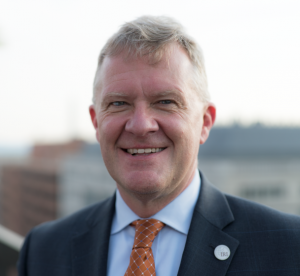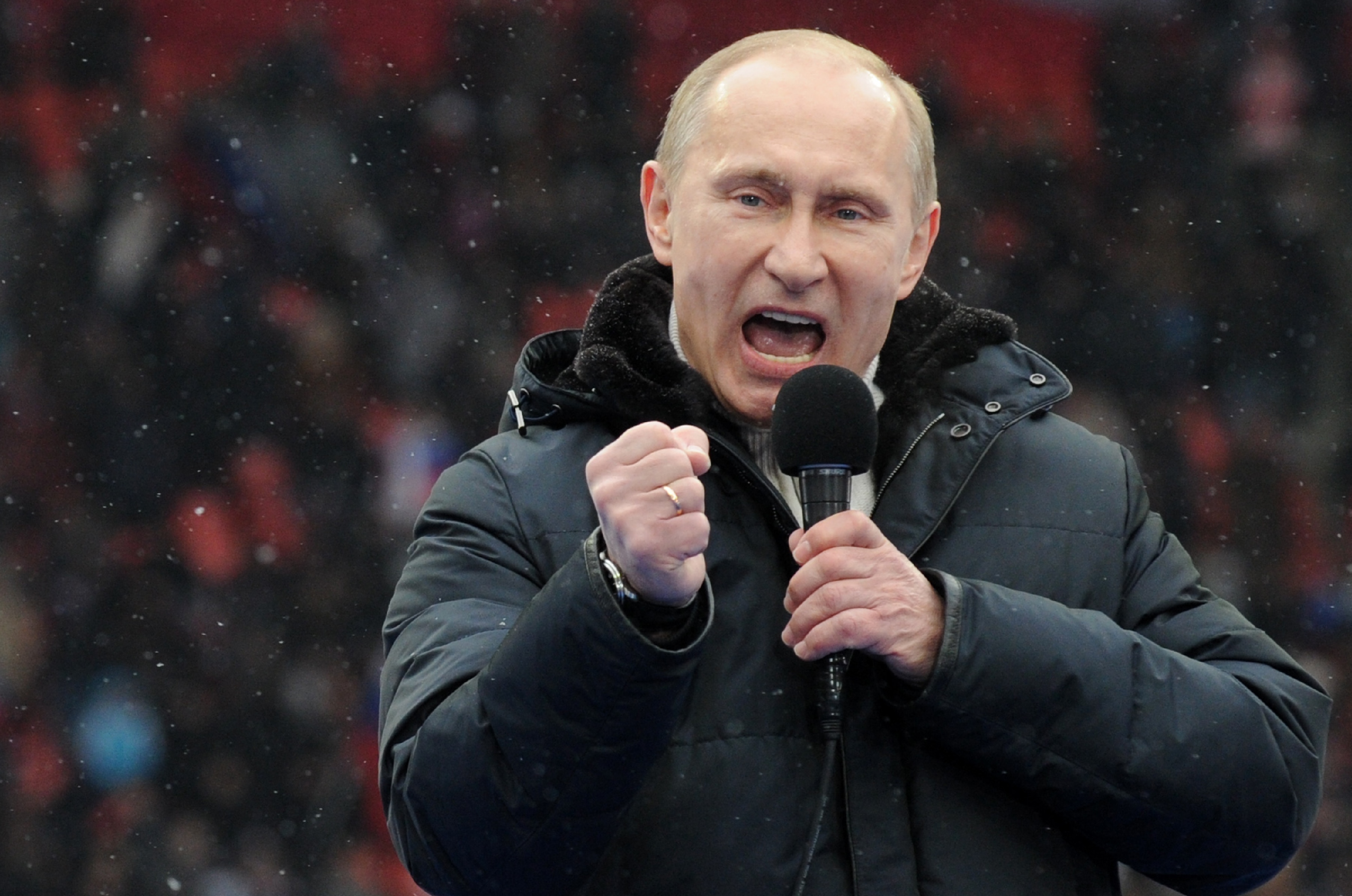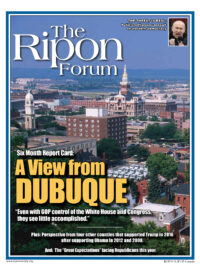
In the days of the old Soviet Union, there was an often-repeated joke about the ‘mainstream media’ of the time, where the two major papers were called Pravda (‘Truth’) and Izvestiya (‘The News’). There was, so the joke went, no ‘news’ in ‘Truth,’ and no ‘truth’ in ‘The News.’
Today, the Russian Federation under President Vladimir Putin has updated this approach for a new, more tech-savvy era and taken it global as part of its attempt to undermine the democratic institutions of the transatlantic community – an effort that began long before news broke of Russian involvement in the 2016 US presidential elections.
In Europe, the post-Cold war strategic goal of the United States was crystalized by George H. W. Bush in Mainz, West Germany in May 1989: to build and maintain a Europe “whole and free.” At that time, the field for democracy advocates – both European and American – was wide open. The people of the newly freed, former Warsaw Pact countries were hungry for assistance; those in the field felt the full support of the United States government; and Russian interference was declining dramatically following the collapse of the Soviet Union.
Over two decades later, the strategic situation has changed radically, and in some ways has reversed. Today, it is Moscow’s goal that is quite clear: to destroy the institutions of the post-war transatlantic consensus, most importantly the European Union and NATO. Completely apart from the well-known military intervention and annexation tactics in Georgia and Ukraine, the Kremlin has deployed a multi-faceted campaign to achieve this objective.
Today, Moscow’s goal is quite clear: to destroy the institutions of the post-war transatlantic consensus, most importantly the European Union and NATO.
Moscow effectively uses its control of energy supplies to blackmail its neighbors; regularly practices military gamesmanship in areas such as the Baltic Sea to demonstrate strength and encourage hesitation on the part of the West; and has been the power behind covert operations designed to bring down democratic governments, which we most recently saw in Montenegro last year.
Parallel to these applications of hard power, the Russian Federation is also carrying out a sophisticated and opportunistic soft-power campaign to weaken democratic institutions in Europe. This effort stands on five key pillars of engagement employed by the Kremlin to achieve its strategic goals.
The first of these five pillars is direct financial and/or political support of parties that support Russian Federation positions on the national and/or at the European Union level. The most extensively-documented example of this practice is the combined 11 million Euros funneled to Marine Le Pen’s Front National in France in 2014.
But there are many more examples. In Germany, the increasingly deep ties between the right-wing, anti-establishment Alternative für Deutschland (AfD) party and Putin’s United Russia party in Moscow have raised red flags. In Hungary, the extreme right-wing Jobbik party has been under investigation for allegedly receiving funding from the Russian government. And this is not merely a problem with the far-right. Italy’s regionalist Northern League and the far-right New Force from Italy and Greece’s left-wing Syriza and right-wing Golden Dawn have also come under scrutiny as a result of their support for Moscow.

The second pillar of Moscow’s effort to undermine Europe is its execution of sophisticated disinformation campaigns against governments, parties and individuals that do not toe the Kremlin’s line.
This year already has seen a number of major elections in Europe – in the Netherlands in March and in the UK and France just last week – and national elections are still to come in Germany in September. Knowing that any other possible coalition government not under the leadership of Chancellor Angela Merkel will not maintain the European consensus on the sanctions regime imposed on Moscow for its aggression in Ukraine, Moscow is directing its full disinformation fury on Merkel and her Christian Democratic Union.
Taking the long view, this is nothing new. After the Russian Revolution, Adolph Joffe, the first Bolshevik ambassador to Germany, was caught carrying suitcases stuffed with anti-German propaganda into Berlin. Of course, today the internet has made the transmission of propaganda far more sophisticated and dangerous.
Evidence collected by the International Republican Institute’s Beacon Project, which is designed to push back against Moscow’s disinformation and soft-power meddling, suggests that the campaign against the Merkel government rests on three core narratives, some of which have also been adapted to other European countries.
First, that Merkel’s immigration and refugee policies have left the country at the mercy of Muslim criminals. The infamous “Lisa Case” of early 2016 (and recent follow-on “Lisa 2.0 Case), in which migrants were falsely accused of raping a young, ethnically Russian girl in Germany, is the clearest example of this narrative.
The Russian Federation is carrying out a sophisticated and opportunistic soft-power campaign to weaken democratic institutions in Europe.
Second, that Merkel’s Germany alternatively is the source of violence. This was the main thread in last month’s fake news regarding an alleged rape by German soldiers deployed by NATO in Lithuania.
And third, that Merkel’s policies have weakened the economy by driving hard-working ethnic Germans out of the country.
These narratives illustrate the way in which the Kremlin exploits legitimate policy debates surrounding Germany’s open-door migrant policy and exacerbates tensions through fake news. With the German Bundestag already having been hacked, the country’s leaders are very aware of the threat posed to their democratic process. We can surely expect much more Russian engagement in that country in the run-up to elections on September 24, 2017.
The third pillar of Russia’s effort is to seize upon areas of domestic tension to sow divisions that play to its advantage. Perhaps the clearest example of this tactic could be seen in the campaign leading up to the April 6, 2016, referendum in the Netherlands organized by an anti-EU NGO, asking whether or not the public would support the Association Agreement between the EU and Ukraine.
Here, anti-Ukrainian Russian narratives were picked almost verbatim by the Right and the Left in their respective “No” campaigns in the Dutch referendum, where flyers contending that Ukraine suffers from “armed fascist militias” roaming the streets were taken directly from Russian propaganda outlets. On the Left, the Socialist Party in the Netherlands condemned the Association Agreement as “partially responsible” for “a bloody civil war with nearly 10,000 deaths and more than a million people in flight” from or within Ukraine.
As such, Dutch voters were asked to believe that having Ukraine in the EU would antagonize Russia and risk war on Europe’s doorstep. Faced with this sophisticated campaign of scaremongering, 61 percent of the Dutch electorate voted “No.”
The fourth pillar of the Russian effort is the use of fake “democracy support” organizations. Just as Russia has become one of the world’s leading sources of “fake news,” the Russian Federation has established so-called “democracy support” organizations that actually exist to discredit elections that do not deliver Moscow-friendly governments, and legitimize elections that deliver the desired results.
As recently as last month, the contested Nagorno-Karabakh region held a so-called “constitutional referendum” that was “observed” by fake election monitors from far-right parties allied with Putin’s United Russia party, including representatives of the German AfD and Austrian FPÖ. These efforts are built upon the same extreme-right and extreme-left political personalities in Western and Central Europe that carry Moscow’s water in domestic debates against the EU and NATO.
To counter the Russian effort, policy makers in the United States and Europe at the national and European Union level must help develop a stronger transatlantic response to Russian influence.
The fifth pillar of the Russian effort is funding for think tanks and other NGOs inside the European Union. A number of large, Russian “government-organized non-governmental organizations,” or GONGOs, support think tanks across Europe in an attempt to influence foreign policy and break the sanctions regime imposed on Moscow by the EU.
These five pillars constitute a significant commitment by Putin’s Russian Federation to weaken what it views as a threat – the successful alliance of modern, liberal democracies on its doorstep, the kind of alliance that could someday include a democratic Ukraine, Moldova or Georgia.
To counter the Russian effort, policy makers in the United States and Europe at the national and European Union level must help develop a stronger transatlantic response to Russian influence. In Europe, this means working with parties and NGOs to restrict foreign funding for political parties. It also means working closely with members of the European Parliament to press for full funding of the European External Action Service’s East StratCom counter-disinformation effort.
The United States is uniquely positioned to take the lead on what may be one of the defining geopolitical challenges of our time. It is in our national security and economic interest to do so. Twenty-eight years after George H.W. Bush’s speech in Mainz in 1989, we are undoubtedly further along in building a Europe whole and free and at peace.
But threats we thought had been vanquished have returned in full force, and partnership with our European allies is as important as ever.
Jan Erik Surotchak serves as Director, Europe, for the International Republican Institute.




